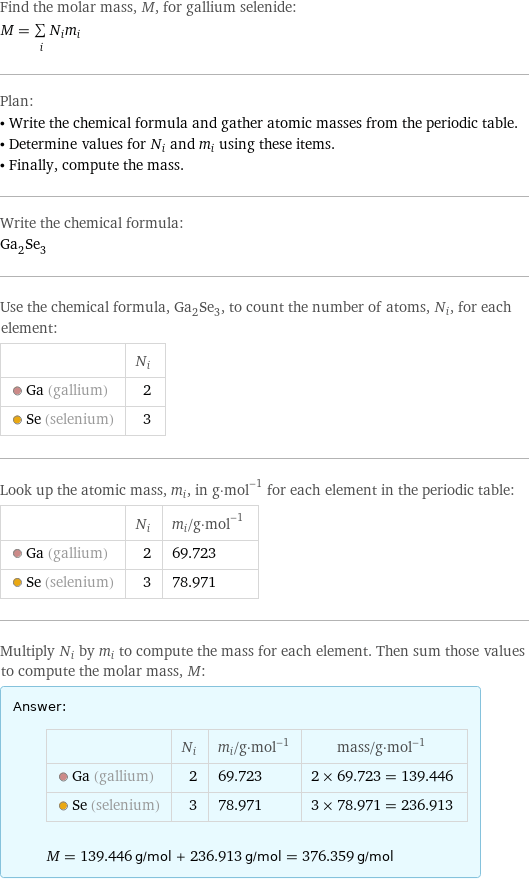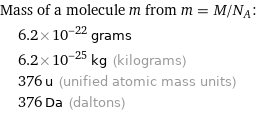Input interpretation

gallium selenide | molar mass
Result

Find the molar mass, M, for gallium selenide: M = sum _iN_im_i Plan: • Write the chemical formula and gather atomic masses from the periodic table. • Determine values for N_i and m_i using these items. • Finally, compute the mass. Write the chemical formula: Ga_2Se_3 Use the chemical formula, Ga_2Se_3, to count the number of atoms, N_i, for each element: | N_i Ga (gallium) | 2 Se (selenium) | 3 Look up the atomic mass, m_i, in g·mol^(-1) for each element in the periodic table: | N_i | m_i/g·mol^(-1) Ga (gallium) | 2 | 69.723 Se (selenium) | 3 | 78.971 Multiply N_i by m_i to compute the mass for each element. Then sum those values to compute the molar mass, M: Answer: | | | N_i | m_i/g·mol^(-1) | mass/g·mol^(-1) Ga (gallium) | 2 | 69.723 | 2 × 69.723 = 139.446 Se (selenium) | 3 | 78.971 | 3 × 78.971 = 236.913 M = 139.446 g/mol + 236.913 g/mol = 376.359 g/mol
Unit conversion

0.37636 kg/mol (kilograms per mole)
Comparisons

≈ 0.52 × molar mass of fullerene ( ≈ 721 g/mol )

≈ 1.9 × molar mass of caffeine ( ≈ 194 g/mol )

≈ 6.4 × molar mass of sodium chloride ( ≈ 58 g/mol )
Corresponding quantities

Mass of a molecule m from m = M/N_A: | 6.2×10^-22 grams | 6.2×10^-25 kg (kilograms) | 376 u (unified atomic mass units) | 376 Da (daltons)

Relative molecular mass M_r from M_r = M_u/M: | 376